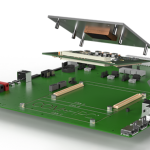University of Glasgow’s researchers are working on a project to understand whether the human brain and neural network models recognise things in the same way, using the same process steps.
One current challenge in accurate AI development is understanding whether the process of machine learning matches that of how humans process information. The researchers’ study will highlight the way to creating more accurate and reliable AI technology that will process information more like our brains.
“Creating human-like AI is about more than mimicking human behaviour – technology must also be able to process information, or ‘think’, like or better than humans, if it is to be fully relied upon. We want to make sure AI models are using the same process to recognise things as a human would, so we don’t just have the illusion that the system is working,” said Professor Philippe Schyns, Dean of Research Technology at the University of Glasgow.
Neural networks, which are part of the broader family of machine learning, have become increasingly used in automated applications, such as face-recognition systems and self-driving cars – even though scientists still do not fully understand how these networks process information.
Researchers use deep neural networks (DNNs) to model the processing of information. While DNNs have become an increasingly popular tool to model the computations that the brain does, particularly to visually recognise real-world “things”, the ways in which DNNs do this can be very different. First the researchers must show that both the brain and DNNs recognise the same things – such as a face, for example – by using the same face features. Then, they need to establish if the brain and DNNs process those features in the same way, with the same steps of computations.
“Having a better understanding of whether the human brain and its DNN models recognise things the same way would allow for more accurate real-world applications using DNNs,” said Schyns. “If we have a greater understanding of the mechanisms of recognition in human brains, we can then transfer that knowledge to DNNs, which in turn will help improve the way DNNs are used in applications such as facial recognition, where currently they are not always accurate.”










